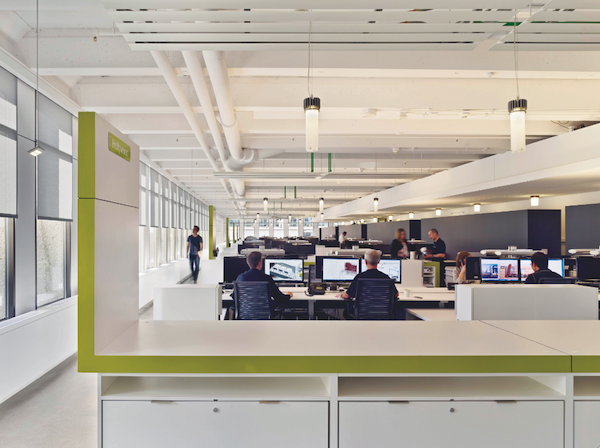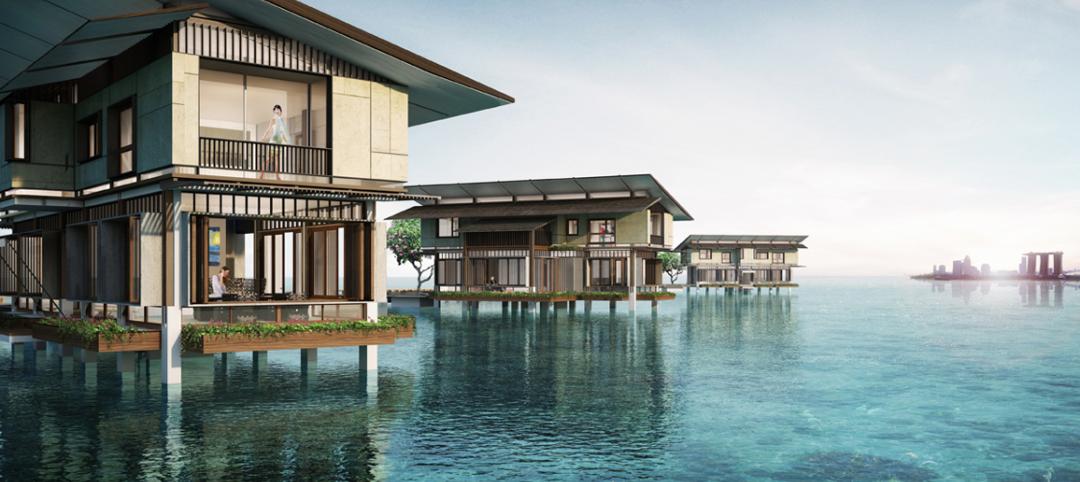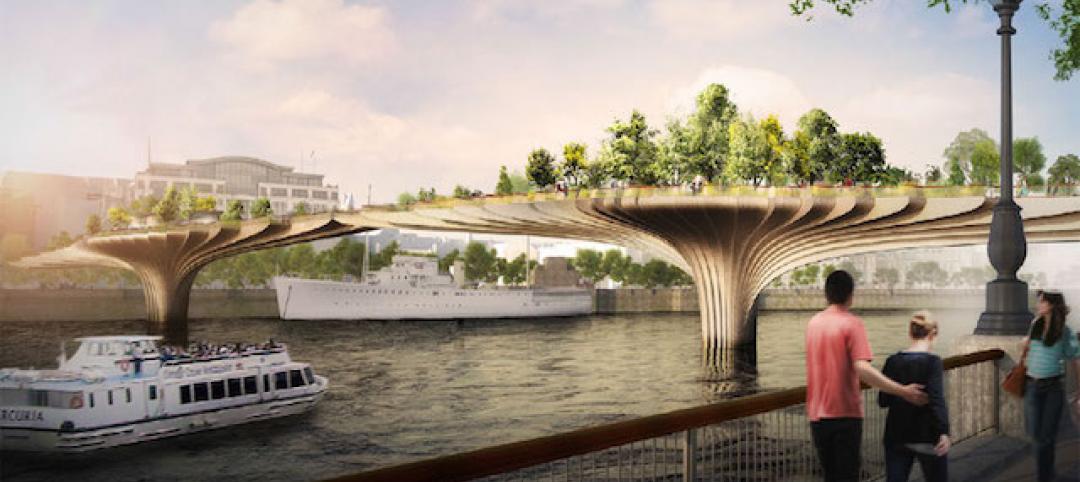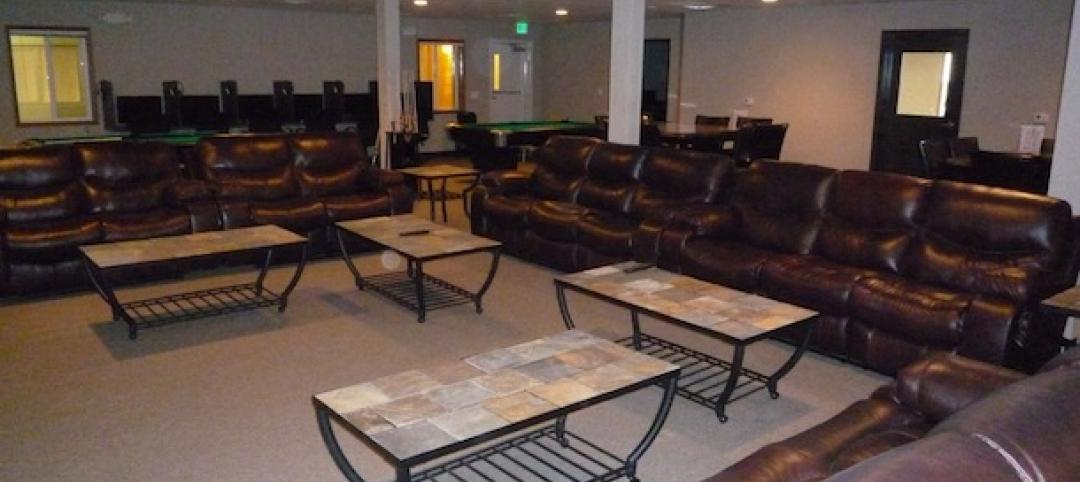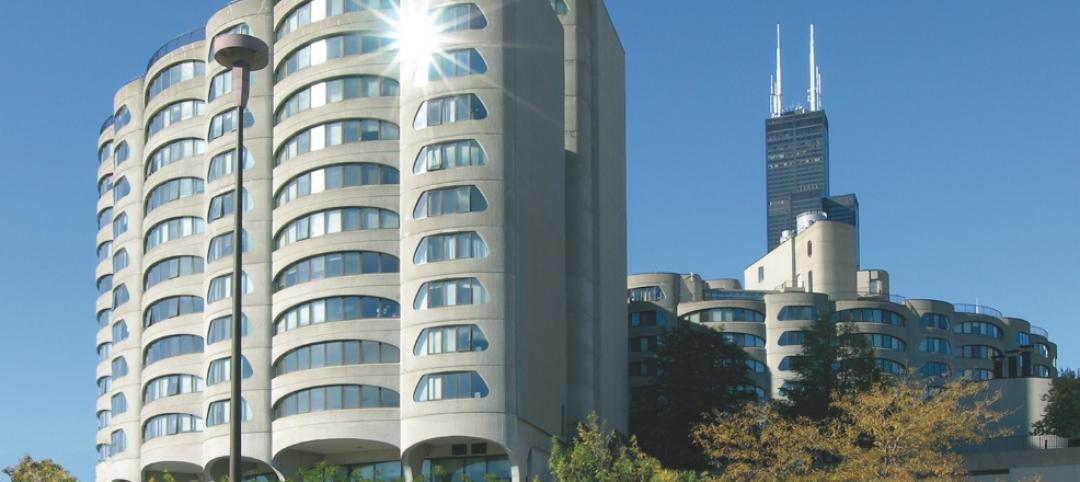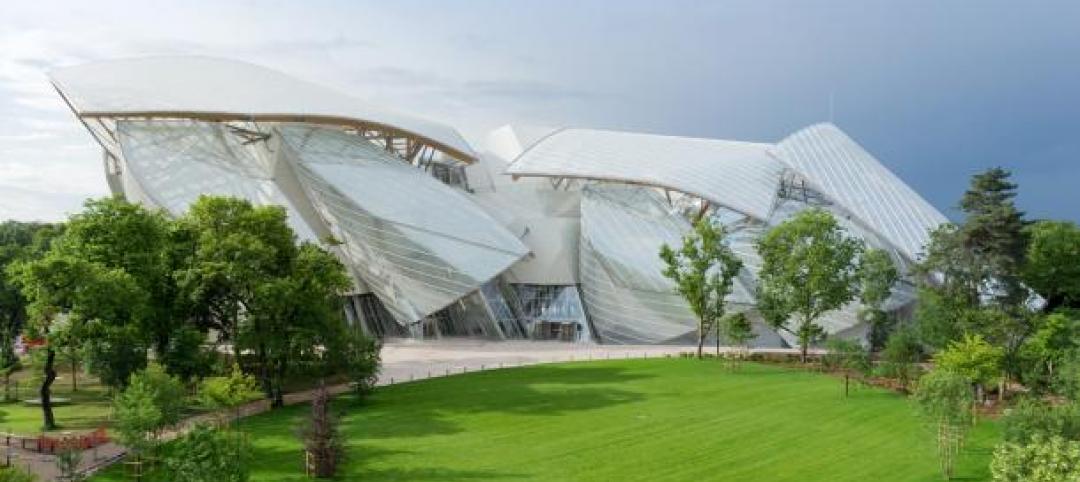Windows not only transform the façade of a building, the natural light that they allow inside is a vital tool in highlighting a building’s interior design elements.
But sunlight is not always needed—or even wanted. At some point in the day, direct sunlight will enter the space, causing glare and heat gain.
Enter the interior shade system.
“The primary purpose of a shade system is to control glare for the user’s visual comfort,” says Kristopher Baker, PE, LEED AP, Senior Associate in the Denver office of Syska Hennessy Group. These systems also help eliminate excess heat caused by direct sunlight.
Designing a shade system is more complex than picking out basic white venetian blinds. The Building Team’s overall design and functional goals should be considered, as well as the end user’s needs. Here are five elements to consider when designing an interior shade system.
1. Make sure the type of shade system meets client needs and program goals.
The type of device should be chosen based on the client’s needs and the overall programmatic goals of the project. Different types of shades have different benefits, according to Baker.
• Honeycomb shades feature two to three layers that trap air inside, acting as insulation and allowing users to reduce heat loss through the windows.
• Venetian blinds are available in various sizes with slats that can be tilted at different angles to control the amount and direction of sunlight that is allowed into a space.
• Roller shades are panels of fabric with varying levels of openness in the weave.
Follow these guidelines to get your shade system right
1. Make sure the type of shade system meets client needs and program goals.
2. Fit the shade system to the specific type
of space you’re working in.
3. Check out the new control mechanisms
that are available.
4. Use shades to help meet your project’s
energy goals.
5. Look into the future of shading technology.
Joseph Parks, national sales manager for commercial window treatments at Lutron, says a shade should be chosen primarily for its function, rather than its form. “A lot of times the fabric is chosen based on the look or the aesthetic or how it matches the interior, rather than how transparent the fabric is with regard to light,” he says.
2. Fit the shade system to the specific type of space you’re working in.
Baker highlights the importance of understanding the space and what it will be used for when designing a shade system. Shades are used to control glare in a specific environment, but not all spaces need shades. For example, an airport terminal is one location where shading devices are not necessarily desirable.
“Having direct sun and having that brightness helps you with your circadian rhythms, and that’s what helps you get over jet lag,” Baker says. “That’s why most of the new airports have a lot of daylight coming into the space.”
However, for an eye clinic, where patients are moving throughout the facility with their pupils dilated, a shade system would be ideal for reducing the amount of direct sunlight penetrating the space.
High-traffic areas such as atriums and lobbies require a more varied approach in shade design, with a number of options for glare control.
The library of Calvert High School in Prince Frederick, Md., is one such location where a shade system was necessary for the productivity and comfort of the occupants. Skylight panels totaling 17,000 sf top the media center, but the possibility of disruptive glare and heat gain posed a challenge. A user-controlled mechanical shade system allows school administrators to control the position of the shades for the comfort of students and staff working below.
3. Check out the new control mechanisms that are available.
The use of automated control systems is on the rise, according to Parks. “There’s certainly a big trend in the solar tracking arena of shades,” he says. “The shades are smart enough to understand where the sun is supposed to be in relation to the building, so they can either manage the daylight or allow more daylight into the space.”
More advanced technology places sensors on the window, allowing for more precise automatic glare control based on the sun’s position.
The Portland, Ore., office of engineering firm Glumac features one such automated system. Solar-adaptive roller shades automatically adjust based on the amount of direct sunlight entering the space.
Manual systems have their merits, but Baker warns that building users can override the shading system. “If you walk around an office park, you’ll see that 80 to 85% of the blinds of every office are closed so that people can’t see out,” he says. “People have no problem getting rid of sun when they’re annoyed by it, but when the sun goes away they don’t open them back up.”
If a manual system is specified, user education is vital to ensure building occupants operate the shading system the way the Building Team and owner intended.
4. Use shades to help meet your project’s energy goals.
Shades can lower a building’s HVAC cooling load by about 10% and can increase the daylight harvesting savings by 30–40%, according to Parks. Care must be taken to determine what the building’s overall energy goals will be and how the shade system will fit into that plan.
At the Glumac office, the solar-controlled shades are accompanied by a lighting system with vacancy and daylight sensors that work together to adjust the amount of natural and artificial light in the space, with an ultimate goal of reducing the building’s dependence on electric lighting.
While shade systems are a part of an effective daylighting strategy, Baker stresses that some form of glare control should be implemented in the design of any building, regardless of its daylighting techniques.
“You can’t allow the direct sun to come in and splash your desk,” he says. “Fundamentally, the glare control has to be part of a solution, whether there’s daylighting or not.”
5. Look into the future of shading technology.
What is innovative right now might be outdated and less efficient than newer technologies in 10 years. An investment in new technology might prove more efficient and effective than relying on what you’ve always used.
“The technologies are going to continue to get smarter,” says Parks. “We’ve gone pretty far in that we can now sense what is going on right outside the window, but you may see systems that can communicate to building management systems and develop a hierarchy of needs based on temperature and light, rather than just light.”
Baker sees that innovation being taken one step further, with the expansion of dynamic glass technology that may eliminate the need for a shade system altogether.
Electrochromic glass uses an electrical pulse to control the tint of the glass; thermochromic glass changes the tint based on the surface’s temperature.
“If the sun is on that glass, then it goes dark; if the sun is not on that glass, it stays clear,” Baker says. “It’s expensive technology right now, but if they get a hold in the marketplace, you will not need interior blinds.”
Related Stories
| Dec 4, 2014
World’s largest eco-resort to open soon in Indonesia
Just under 10 miles away from Singapore, Funtasy Island (yes, that's the real name) is a resort tucked away in the mangrove islands of the Riau archipelago.
| Dec 4, 2014
£175 million 'Garden Bridge' gets the green light to cross the Thames
Westminster Council has approved a £175 million 'Garden Bridge' that will allow pedestrian traffic only. There has been some controversy about this bridge, which is expected to attract seven million visitors annually.
Sponsored | | Dec 3, 2014
Modular Space Showcase: Bringing work-life balance to energy workers in the Bakken region
To meet the demands of the booming energy business, Williston needs to provide homes, recreation centers, restaurants, hotels, and other support facilities for the tidal wave of energy workers relocating to the Bakken Shale area. SPONSORED CONTENT
| Dec 3, 2014
U.S., Canada, and Mexico finalize agreement to recognize architect credentials
The agreement represents over a decade of negotiations, bringing cross-border recognition of professional credentials from concept to reality in the spirit of the North American Free Trade Agreement.
| Dec 3, 2014
35 cities added to Rockefeller Foundation's 100 Resilient Cities Challenge
Chicago, Dallas, and Pittsburgh are among the U.S. cities to join the 100 Resilient Cities Challenge, pioneered by The Rockefeller Foundation.
| Dec 2, 2014
First existing multifamily buildings to earn Energy Star certification unveiled
River City in Chicago is one of 17 existing multifamily properties to earn Energy Star certification, which became available to this sector on Sept. 16 via a scoring system for multifamily properties that Energy Star and Fannie Mae had been developing for three years.
| Dec 2, 2014
Nashville planning retail district made from 21 shipping containers
OneC1TY, a healthcare- and technology-focused community under construction on 18.7 acres near Nashville, Tenn., will include a mini retail district made from 21 shipping containers, the first time in this market containers have been repurposed for such use.
| Dec 2, 2014
Main attractions: New list tallies up the Top 10 museums completed this year
The list includes both additions to existing structures and entirely new buildings, from Frank Gehry's Foundation Louis Vuitton in Paris to Shigeru Ban's Aspen (Colo.) Art Museum.
| Dec 2, 2014
Nonresidential construction spending rebounds in October
This month's increase in nonresidential construction spending is far more consistent with the anecdotal information floating around the industry, says ABC's Chief Economist Anirban Basu.
| Dec 2, 2014
Hoffmann Architects announces promotions
The architecture and engineering firm specializing in the rehabilitation of building exteriors announces the promotion of members of its Connecticut staff.


